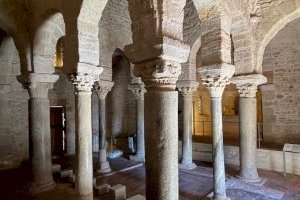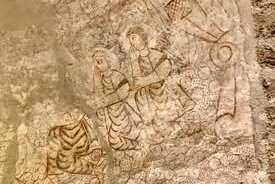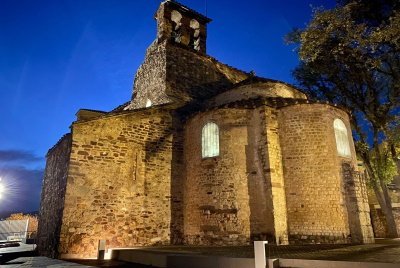Spain
The Episcopal See of Egara
The Episcopal See of Egara is an architectural complex of three pre-Romanesque churches located in the town of Terrassa, north of Barcelona. The wall paintings in the altar rooms of the three churches of Santa Maria, Sant Miquel and Sant Pere are examples of Christian art from the early Middle Ages, between the 5th and 8th centuries.
Site Info
Official Information
- Full Name
- The Episcopal See of Egara and its pictorial decoration (5th-8th centuries) (ID: 6378)
- Country
- Spain
- Status
-
On tentative list 2019
Site history
History of The Episcopal See of Egara
- 2019: Added to Tentative List
- Added to tentative list
- Type
- Cultural
- Criteria
Links
- UNESCO
- whc.unesco.org
All Links
UNESCO.org
- whc.unesco.org — whc.unesco.org
Community Information
- Community Category
- Religious structure: Christian
Travel Information
Recent Connections
News
No news.
Community Reviews
Show full reviews
Tarragona is an easy and interesting day trip from Barcelona and one day is just about the time to see it all. Beside the three churches of the episcopal see it offers a quite remarkable heritage of Modernism.
The three churches were the seat of a bishop at visigothic time when the belief was supposedly Arian and not catholic. As Wikipedia tells us this constellation of three (and sometimes even more) churches was typical for early episcopal seats even within Catalunya and similar groups are documented in Valencia, Vic and La Seu d'Urgell (which bears the episcopal see still in its name). As far as I could find out all of them are lost in which case Tarrassa would be unique just for this constellation alone.
The nomination focuses clearly on the preserved frescoes and artwork from the 5th to 8th centuries. But we find quite some confusion: While Wiki states that it is not even sure if this group of three churches as it is was even built before the 9th century the detailed map that you get when you enter the museum tells a different story: it is organized with five colors which mark the different time periods: The first marked period is called "Iberian and roman period" and contains primarily tombs all over the area. The second is called "First Christian structures (4th century) and contains just a few now invisible walls to the NE of the church of Santa Maria. The third period is …
Keep reading 0 comments
This site was added to the tentative a short time before I was supposed to be in Barcelona. I drove to Terrassa before heading into town (yes, I drove into Barcelona and even parked free and safely outside my apartment ;) I did actually book a place to park nearby which I still highly recommend, parking in general looks like a *****). I arrived a bit early not knowing the opening hours and had to wait around, but eventually the ticket office sold me a ticket and I was allowed to go inside ten minutes early. First you see the "museum" part with glass walks. Nothing is really great here. The main attraction is outside.
Three churches are outside, but these aren't actually the original churches. The pamphlet explains it nicely that there are several layers of church history built upon it, almost like the city of Troy just no mythical wooden horse. So of course my first question is what they are really inscribing here, as the old section is buried under others, but the title clearly points out the "5th-8th centuries" decorations which aren't anything special to me - surely they can be unique as the document state. You can see sections of it, with some under glass panels at the museum. The current churches are from the 11th and 12th century.
The first two churches offer very little to see, and the only large one, San Pedro, is still used a regular church. The documents …
Keep reading 0 comments
